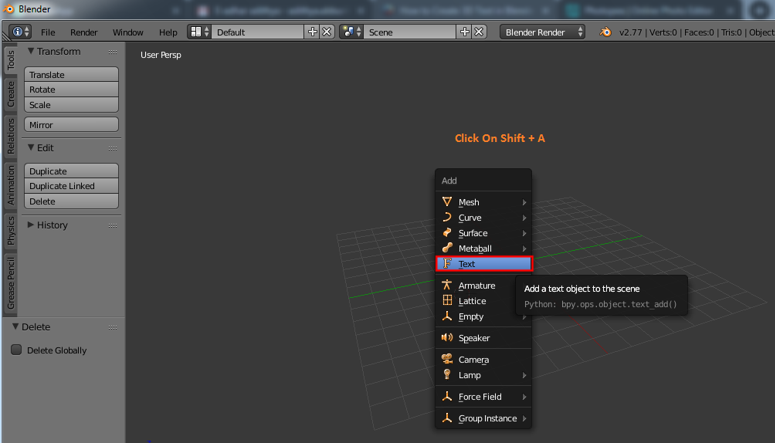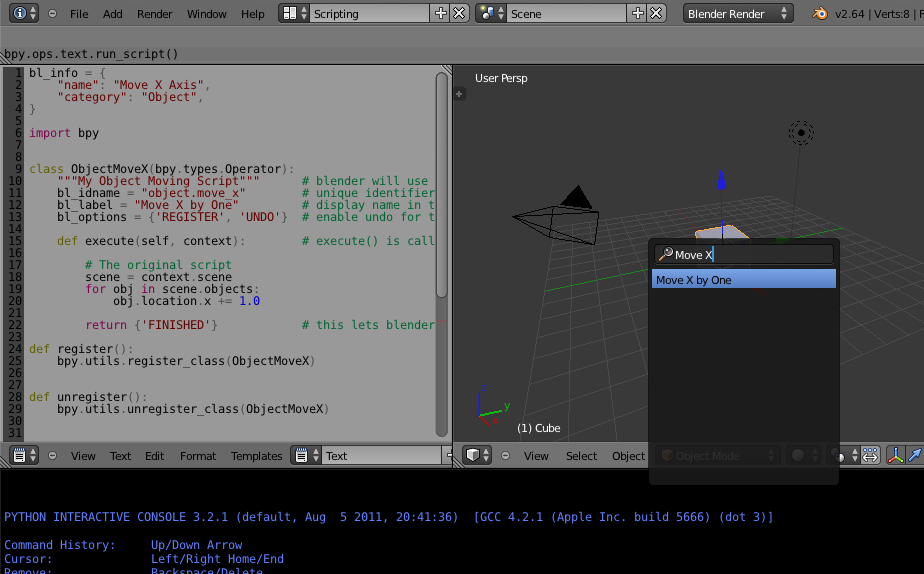
- #HOW TO CHANGE THE BLENDER PYTHON TEXT EDITOR COLOR HOW TO#
- #HOW TO CHANGE THE BLENDER PYTHON TEXT EDITOR COLOR FULL#
- #HOW TO CHANGE THE BLENDER PYTHON TEXT EDITOR COLOR FREE#
See also the section of the Freestyle Python API in

įreestyle for Blender comes with a number of Python style modules that can serve as a starting Then the select menu within an entry of the style module stackĪllows you to select a module from the list of loaded style modules.Ī screen capture of a style module cartoon.py loaded in the Text Editor (left),Īs well as Freestyle options in the Python Scripting mode in the View Layers buttons (right). Python style modules are stored within blend-files as text data-blocks.Įxternal style module files first need to be loaded in the Text Editor. Finally, the chains are transformed into stylized strokesīy the stroke creation operator, which takes a list of user-defined stroke shaders.
#HOW TO CHANGE THE BLENDER PYTHON TEXT EDITOR COLOR HOW TO#
These operators are alsoĬontrolled by user-supplied predicates and functions in order to determine how to transform Splitting and sorting operators to build chains of feature edges. The selected edges are processed with the chaining, The selection operator identifies a subset of inputįeature edges based on one or more user-defined selection conditions (predicates). a set of detected feature edges), and the output is a set of stylized strokes.Ī style module is composed of successive calls of five basic operators: selection, chaining, The input to a style module is a view map Style modules in the Freestyle terminology. In this control mode, all styling operations are written as Python scripts referred to as
#HOW TO CHANGE THE BLENDER PYTHON TEXT EDITOR COLOR FULL#
You can get more information about the Blender scripting API here.The Python Scripting mode offers full programmable line stylizes.
#HOW TO CHANGE THE BLENDER PYTHON TEXT EDITOR COLOR FREE#
If you have any question, feel free to leave a comment and I will try to answer it. #Move all objects by 1 Blender Unit in Z direction

#Add a SUBSURF Modifier with the name "My SubDiv". #Iterate over all members inside the Object struct for ob in : You can also make more than one change at the same time, just add a new line for each setting: #Enable transparency and change method to RaytraceĢ: Add a Subdivision Surface Modifier to all Mesh objects import bpy Item.diffuse_color = (1,0,0) #Change diffuse shader to toon Item.emit = 1 #Change diffuse color to red Some examples: #Set the material Emit value to 1


You can do the same with all other settings, just replace the last line.Ĭheck the “Python” text inside the tool tip to get the name of a property. You don’t have to type the comments (lines starting with # are comments inside the code) It will make all your materials shadeless! Easy isn’t it? Type the lines above into the Text Editor and press the button “Run script”. #Iterate over all members of the material struct for item in : You want to change a material setting, but not only for a single material but for all in your file: # import the Blender module import bpy You want to make all materials in your blend file shadeless? Or add a modifier to all objects? Instead of doing that manually (which can take a lot of time) you can write a few lines of code, and you’re done! Curious? Here is the answer!ĭon’t worry, you don’t need any special knowledge, though some basic understanding of Python can be useful here.įirst of all, open up the Text Editor space inside Blender (and a Python Console, which is useful sometimes). Today I am going to show you, how you can change settings globally.


 0 kommentar(er)
0 kommentar(er)
